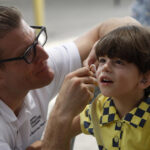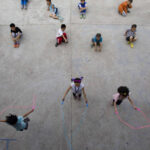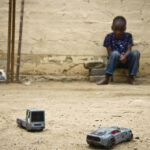Half of South Africa’s 100 000 blind children could have been saved if they were treated earlier, shows a new report.
Sub-Saharan Africa is the region with the highest prevalence of childhood blindness in the world, according to a report.
The report – the first of its kind in Africa – was launched by international non-profit sight-saving organisation Orbis and child rights organisation the African Child Policy Forum in Johannesburg on Wednesday.
“We estimate there are 100 000 blind or visually impaired children in South Africa alone,” said Lene Overland, chief executive of Orbis Africa. “Half of these cases could have prevented if the children had been treated early enough.”
One of the most common causes of childhood blindness, according to the report, is cataracts (clouding of the lens of the eye which impairs vision). Some children are born with cataracts and some develop them because of injury to the eye.
“[Cataracts] can be treated quite easily with surgical intervention but the timing is critical – if a child is born with a cataract they should have the surgery before they are six years old [or the operation might not be effective],” said Reshma Dabideen, one of the authors of the report.
Dabideen said one of the reasons why these children don’t access these surgeries is because of the unequal distribution of specialists and facilities between the public and private sector as well as between urban and rural settings. “Eighty percent of ophthalmologists service the private sector, with only 20% [working] in the public sector,” she said.
According to the department of health’s Sandya Singh, blindness “keeps families in a state of poverty because the demands placed on the family are so great and very often the well-being of family members is compromised because of the needs of the child”.
She said the department considered the issue of eye health very seriously and is looking to establish permanent eye health centres at a minimum number of one per province.
Deputy minister of health Gwen Ramokgopa, appointed an interim task team on eye health to review the government’s current guidelines. Singh said this process was at an advanced stage and was submitted for approval.
Dabideen said the health department and Orbis would collaborate in the future to address the issue of child eye health. “No child should go blind needlessly.”
Quick statistics from the report “Child Eye Health in Africa”:
- Sub-Saharan Africa has the highest prevalence of childhood blindness in the world, with 1.24 blind children per 1 000 children, compared to 0.8 in India and 0.3 in Europe.
- In 2012, there were more than 100 000 children in South Africa who are blind or reported to have severe visual impairments.
- The World Health Organisation estimates that 80% of blindness in adults and around 60% in children globally could be prevented.
- It is estimated at least half of blind children in South Africa would still have their sight if their eye problems were identified and treated in time.
- Untreated cataracts are the leading cause of blindness in children in South Africa.
Amy Green was a health reporter at Bhekisisa from 2013 until 2016.





